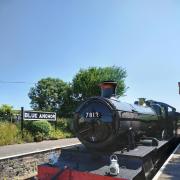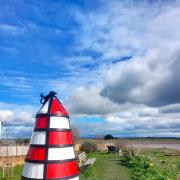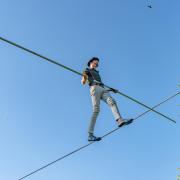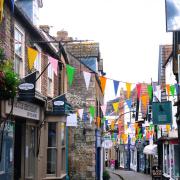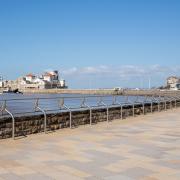ANDY BALLARD slips into a slower pace of travel and takes us on a journey through the Avon Valley.

Think of an iconic canoeing river in the UK and perhaps the Wye will perhaps spring to mind. Much closer to home for those of us living in Somerset who love to paddle whether by canoe or kayak is the River Avon, which winds itself from its source in Gloucester through Wiltshire and Somerset to Bristol where it discharges into the mighty Severn Estuary. At around 75 miles in length, the river as it straddles the Wiltshire/Somerset border passes through the beautiful countryside of the Avon Valley with it’s mellow Bath stone bridges and imposing aqueducts.
A canoe route that rapidly became a favourite paddle of mine last spring and summer comprises of a five-mile rough figure-of-eight loop going downstream with the current on the Avon towards Bath and returning on the still waters of the Kennet and Avon canal. The picturesque village of Limpley Stoke is the starting point for this easy and very rewarding day trip. The small parking layby in the village lays midpoint between the canal above and the river below. The first time I paddled this route in April meant that river levels were still fairly high resulting from the winter rain, providing a current to carry my canoe and I at a fairly swift pace under the bridge at Limpley Stoke.
Within minutes of leaving the bridge behind, a whole new watery world opens up to the canoe paddler. It’s a unique perspective accessible only to those on (or in) the river, whether that’s in a boat or swimming. Immediately my eye catches the iridescent cyan shimmer of a kingfisher’s wing as it flys inches above the surface of the water - coming to rest on a branch further downstream. It’s a perfect introduction to a slower pace of being for the day. The gentle sloosh of my paddle as it cuts through the water acts as a metronome taking me into a serene frame of mind akin to a meditative state.
Reaching the magnificent structure of Dundas Aqueduct, I moor up on the pontoon belonging to Monkton Combe Rowing Club. Built in the late 18th century, the aqueduct carries the Kennet and Avon Canal over the River Avon on which I’ll be paddling on my return journey later in the day. Fortified by a morning coffee I get back on the river and paddle towards Warleigh Weir. A swimmer coming upstream signals that I must be close to this popular wild swimming spot and sure enough on exchanging greetings with the swimmer I hear the sound of rushing water flowing over the weir.
After an almost silent couple of miles with little more than the sound of birdsong and trickling water, the cacophony from swimmers and picnicking families shakes me from my meditation. The weir marks the start of the portage (canoeing terminology for transporting a canoe across land either by lifting or trolley) up to the canal above. After hauling my solo canoe out of the river I tie it to my small aluminum trolley and pull it through the meadow and across the railway line at Claverton pumping station, up the small lane to the canal.
The Kennet and Avon canal has a different character than the river running below it. Not only is there no current, but it’s much busier - narrowboats chug along in both directions while cyclists and walkers use the towpath. It’s also much narrower and I transition out of the hot sun into the shade of tall ash trees lining the banks. It’s a welcome respite that my sunburnt shoulders appreciate.
Steering my way past permanently moored up barges and hired narrowboats sometimes crewed by boisterous stag and hen parties it’s a pleasant paddle along the canal to the basin at Dundas Aqueduct. I tie up and walk part way across the aqueduct to peer over the top and look down at the river below with the satisfaction gained from journeying along these waterways under my own propulsion, utilising what must be one of the most relaxing ways to see the countryside from an unusual viewpoint. I canoe the final mile or so to bridge no. 175, which marks my egress point back at Limpley Stoke.
HIRE BEFORE YOU BUY
If you’d like to try out canoeing before committing to buying a canoe or kayak it’s possible to hire canoes at several places in the Avon Valley. The still waters of the Kennet and Avon canal make for a perfect and safe location to try out canoeing for the first time. The hire companies provide all the appropriate equipment such as buoyancy aids and paddles and give you a brief overview of canal navigation and etiquette.
Bradford on Avon: Towpath Trail, Frome Road, Bradford on Avon, BA15 1LE. Tel: 01225 867187.
Email: info@towpathtrail.co.uk
Bath: Bath Narrowboats, Sydney Wharf, Bathwick Hill, Bath BA2 4EL.
Tel: 01225 447 276. Email: enquiries@bath-narrowboats.co.uk
Canoe or kayak?
There can be a little confusion when talking about these watercraft.
Canoes are open at the top and are sometimes referred to as ‘Canadian canoes’.The paddler propels the canoe with a single bladed paddle.
Kayaks have a closed deck with a hole for the paddler to crawl into. A two bladed paddle is used for propulsion. Kayaks are used much more on white water rivers as they’re quicker and more maneuverable.
Canoes come in varying sizes; from a 12/13ft solo boat up to 17ft plus for a multi-person touring model. For multi-day trips on a river (or even a day trip like this one) it’s very easy to pack food and drink and other supplies into an open canoe.




